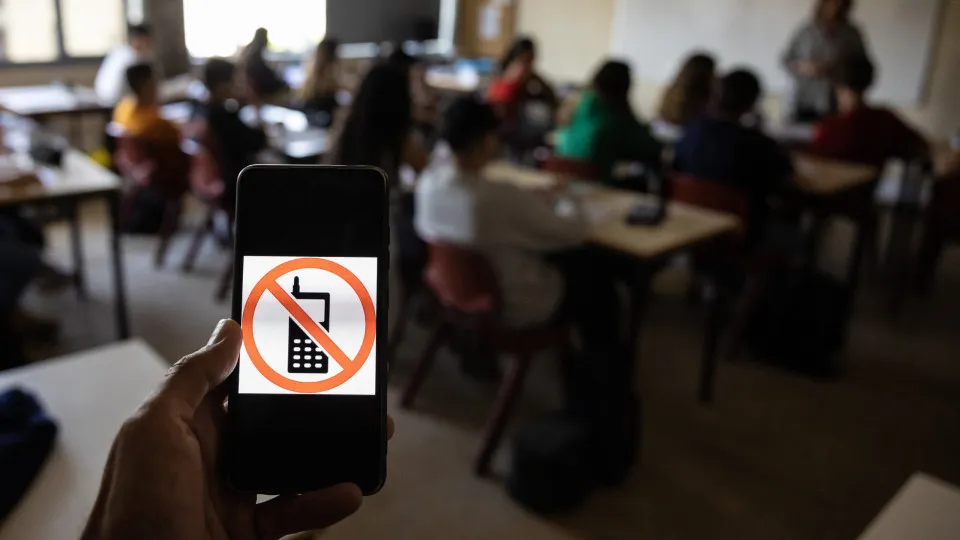
A ban on smartphone use has been implemented this academic year in primary and lower secondary education, a measure previously applied by a school group in the Algarve. This year, they have extended the policy to secondary education, with some modifications.
Dalila Afonso, director of one of the largest school groups in the Algarve, which includes eight schools and approximately 3,000 students, revealed that this year’s initiative goes “a bit further” by involving secondary students in setting guidelines for phone use at school.
“We found it important to implement some new measures here, not with the total prohibition as in primary school, but with some adaptations, especially since we are dealing with older students, with a large outdoor space that is difficult to monitor,” she stated. “We believe we need to focus more on awareness for these students.”
The next step involves gathering input from the school community and promoting activities during breaks as alternatives, such as through the school radio, offering games to students, and setting up ping-pong tables in more visible areas, according to Afonso.
The restriction of smartphones is expected to apply in certain school areas, such as the canteen, library, and classrooms, although many students previously used them despite the rules, as some have difficulty disconnecting, they shared.
“In certain locations and situations, [banning phones] is useful, especially in the classroom where we often get distracted, lose focus, and are disconnected from the real world. We are very dependent on phones, and in some situations, disconnecting a bit is really important,” admits Grace Cleaton.
The 12th-grade student acknowledges that students themselves are realizing that social interaction becomes difficult with phone use: “We can’t develop the same social skills when we are always glued to our phones,” she notes.
Teacher Luísa Cavaco, also a member of the school’s General Council, mentioned that often students “are the first to request a halt to phone usage,” especially when phones are used, for instance, to film incidents or share inappropriate information.
“Some of them also report a certain phone dependency; they no longer know how to converse normally without looking at their phones. It’s a relearning process, and they will be agents of change, sharing this transformation with us,” she emphasized.
Ricardo Lopes, also from the same year, noted that many students “felt the need to check their phones,” even if just to see the time, a behavior teachers are trying hard to discourage.
“Today during presentations, the class heads reinforced the ban on phone use in classrooms. In the class I attended, I didn’t see anyone attempting to use a phone, and when someone seemed to be reaching for their pocket, teachers promptly addressed it,” he reports.
Gonçalo Relvas, from the 11th grade, believes the measure is well thought out, especially in a school with students from 62 different nationalities, where phones actually hinder relationship-building and getting to know others.
“In my class, I think only 10 out of 25 students are Portuguese. The only help phones provided was with translation, but more people are speaking English now, and I think trying to communicate without phones would be much better,” he suggests.
Patrícia Jesus, a teacher and General Council member, is confident that if students are involved in setting phone usage rules, the measure will likely succeed, and monitoring will be more effective because it will involve students, not just the limited staff available at schools.
Sérgio Costa from the Parent Association acknowledges a shortage of non-teaching staff. However, he is aware it’s impossible to have 100% surveillance, as the schools are large, and even with many staff members, fully implementing measures like this remains challenging.




